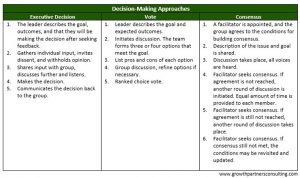
If you’re ever having a conversation about inbound marketing (of which we have many), you’ll notice that the discussion usually starts with exposition about how consumer behavior has shifted over the last several years, and how that affects the marketing and sales processes.
If a prospect wants to know something about a product or service, they don’t wait for a sales team to provide them with the information. They Google their question, and receive an answer right away.
According to Telenet and Ovation Sales Group, in 2007 it took an average of 3.68 cold call attempts to reach a prospect. Today it takes 8 attempts.
As with any new methodology, the question becomes: what happens with the old one? It’s certainly a question that’s been asked of me by clients, who wonder what becomes of their sales team if inbound marketing and marketing automation starts doing all of the work.
Well, the answer to alleviating those concerns is quite simple:
Marketing isn’t replacing sales. It’s enabling it.
Your sales team is still integral in closing leads, but inbound marketing filters down the right leads, the hot, qualified, leads that are primed to purchase.
Consider this: Gleanster Research reports that only 25% of leads are legitimate and should advance to sales. This might explain why, according to a recent study by Marketo, when sales and marketing teams are in sync, companies became 67% better at closing deals.
Your sales team should only be focusing on real leads, and marketing can help it narrow in on which those are. Inbound marketing pulls quality potential clients to your sales team and makes closing the sale easier and more profitable.
But that only works if marketing communicates with sales. A study by CSO Insights claims that 42% of sales reps say they don’t have the information they need when they make a call. Marketing can only enable sales if they’re sharing with them all of the information they need.
That means doing more than just handing over the names and email addresses of qualified leads. Your marketing team should also provide your sales reps with the content and information that can help transform prospects into customers.
One of inbound marketing’s biggest mantras is the importance of content in securing buyers. According to Forrester research, 82% of buyers viewed at least 5 pieces of content from the winning vendor. But content isn’t just a piece of your marketing team’s toolkit as they aim to attract visitors to your site and convert them into leads. It’s also an incredibly strong weapon for your company’s salespeople, who can use relevant content that has been proven to appeal to your target customers in fielding questions and objections from those very customers, as well as in reengaging cold leads.
Your sales team can and should use content to establish their own expertise, and to nurture those leads through the very end of the funnel. And this is where the marketing team can be a huge help to their sales counterparts. See, if your sales team can’t find content, then they can’t use it. Marketing has not only created the content that’s relevant to your prospects, but has also been tracking the consumption of said content. They will, therefore, have an idea of what content will best nurture or convert a prospect, and can hand off the right content to your sales reps accordingly.
One way to do this is to have your marketing team create a library for the sales team. SalesForce recommends building out a spreadsheet that includes what content is available, and how it can be used contextually–broken down by the prospect’s role and buying stage. This library shouldn’t include full-length pieces of content that would be difficult for your sales team to sort through, but rather smaller pieces that can be easily integrated into their sales presentations.
Marketing also helps your sales team through marketing automation, which scores leads based on certain behaviors that signal a lead’s degree of sales readiness–what articles they’ve read, what offers they’ve downloaded, how often they’ve visited the product page, etc. . Marketers can help your sales reps prioritize leads in real time, instead of having them scramble over who to call first.
Salespeople need to know what their leads are interested in, and digital marketing puts a system in place that generates that information, as prospects consistently reveal their interests through what they choose to click. Engagement with online content and offers reveal their interests and what they’re likely to purchase in the future. All of that information is incredibly valuable to your sales team, and should be shared accordingly.
So your sales team is not being replaced by digital marketing. On the contrary, it can be optimized through inbound marketing efforts. 50% of sales time is wasted on unproductive prospecting. That doesn’t mean we replace the sales reps; it just means that we make better use of their time. Automated inbound marketing efforts and content creation can help marketers identify the right leads to send to your sales team–the leads that are ready to have the sales conversation. In that way, your sales team can spend more time talking to purchasers, and say goodbye to poor prospects.
Digital & Social Articles on Business 2 Community(67)
Report Post







